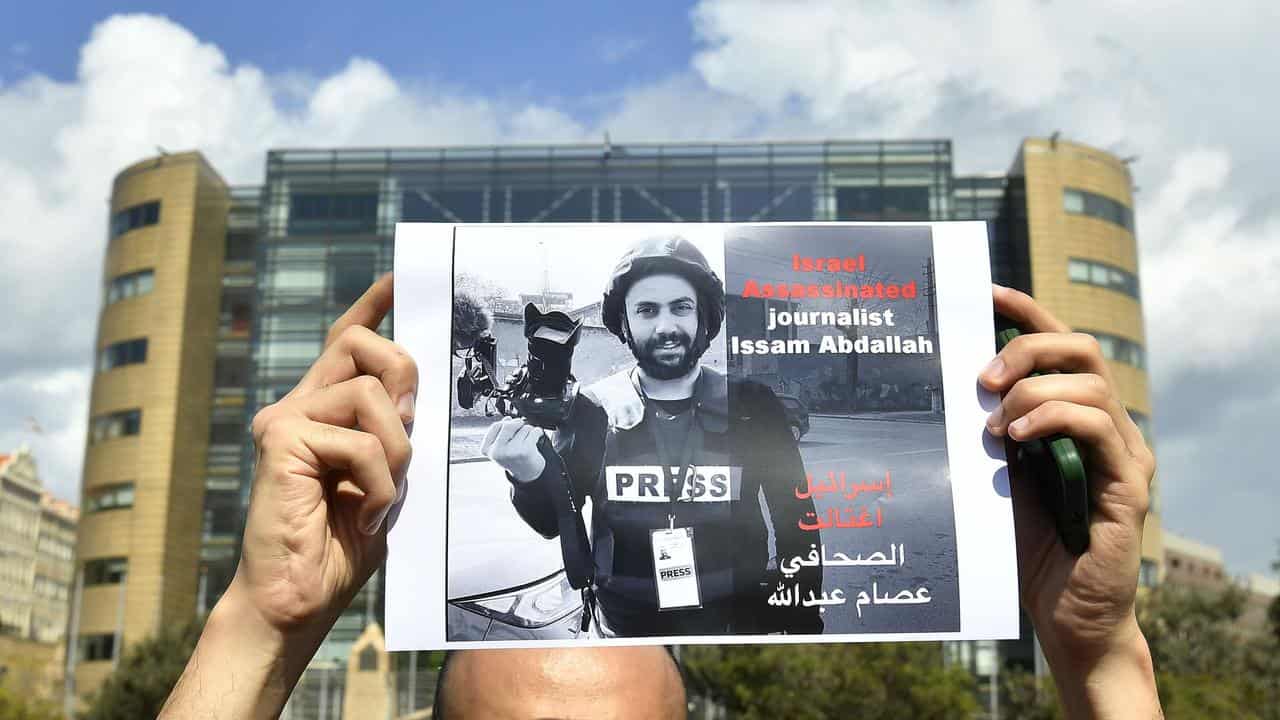
An Israeli tank crew killed a Reuters reporter in Lebanon in October by firing two shells at a clearly identified group of journalists and then "likely" opened fire on them with a heavy machine gun in an attack that lasted 1 minute and 45 seconds, according to a report into the incident.
The report by the Netherlands Organisation for Applied Scientific Research (TNO) - which was contracted by Reuters to analyse evidence from the October 13 attack that killed visuals journalist Issam Abdallah - found that a tank 1.34 km away in Israel fired two 120 mm rounds at the reporters.
The first shell killed Abdallah, 37, and severely wounded Agence France-Presse (AFP) photographer Christina Assi, 28.
A Reuters investigation in December covered TNO's preliminary finding that a tank in Israel had fired at the journalists. In its final report on Thursday, the institute revealed that audio picked up by an Al Jazeera video camera at the scene showed the reporters also came under fire from 0.50 calibre rounds of the type used by the Browning machine guns that can be mounted on Israel's Merkava tanks.
"It is considered a likely scenario that a Merkava tank, after firing two tank rounds, also used its machine gun against the location of the journalists," TNO's report said. "The latter cannot be concluded with certainty as the direction and exact distance of (the machine gun) fire could not be established."
Reuters could not independently determine if the Israeli tank crew knew it was firing on journalists, nor whether it also shot at them with a machine gun and, if so, why.
Neither of the two surviving Reuters reporters or another AFP journalist at the scene remembered the machine gun fire. All said they were in shock at the time.
The Israel Defence Forces (IDF) said it was working on a response to questions from Reuters about the incident. Asked to comment on TNO's preliminary findings in December, the IDF said: "We don't target journalists." A day after the Reuters investigation was published, it said the incident took place in an active combat zone.
International humanitarian law bars attacks on journalists as those in the news media have the full scope of protection granted to civilians and cannot be considered military targets.
"We condemn, in the strongest terms, the attack on a clearly identifiable group of journalists, working in the open. The attack killed our colleague Issam Abdallah and injured several others. We reiterate our calls on Israel to explain how this could have happened and to hold those responsible to account," Reuters Editor-in-Chief Alessandra Galloni said.
AFP Global News Director Phil Chetwynd reiterated his call for a thorough and transparent investigation by the Israeli military.
"If reports of sustained machine gun fire are confirmed, this would add more weight to the theory this was a targeted and deliberate attack," he said.
Ihtisham Hibatullah, Al Jazeera's manager of international communications, urged the Israeli government to disclose the findings of its own investigation.
"This incident strongly indicates intentional targeting, as confirmed by investigations, including by TNO," he said.
Lebanon's Minister of Information did not respond to a request for comment.
TNO noted that the seven journalists were wearing blue flak jackets and helmets, most with "PRESS" written on them in white letters. They had been filming cross-border shelling from a distance in an open area on a hill near the Lebanese village of Alma al-Chaab for nearly an hour before the attack.
Video footage of the aftermath of the attack also showed a black car belonging to Reuters marked "TV" in large yellow letters made out of tape on both the hood and the roof.
TNO said there was a clear line of sight from where the tank rounds were fired to the scene of the attack. In the live TV feeds ahead of the attack, one or more drones can be heard and an Israeli helicopter was also visible overhead in some footage.









